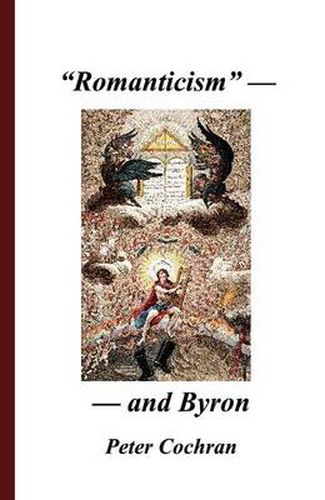Readings Newsletter
Become a Readings Member to make your shopping experience even easier.
Sign in or sign up for free!
You’re not far away from qualifying for FREE standard shipping within Australia
You’ve qualified for FREE standard shipping within Australia
The cart is loading…






Romanticism - and Byron is a book in two parts. In the first part, Dr Cochran examines Romanticism and shows that it is a word meaning anything, and therefore nothing. It is an academic construct created by academics, and has no basis in the writings of the early nineteenth century. Its continued use, argues Dr Cochran, is a modern marketing phenomenon solely. In the second part, Dr Cochran examines the life and work of Byron in the non- romantic context of his contemporaries. He shows how Byron’s antithetical nature created problems when he was forced into compromising situations with friends who were close to parts of his mind, yet irreconcilable with one another. This mobility , argues Cochran, was often an embarrassment for Byron’s social life, but of great benefit to his creativity. This part of the book features chapters on Shelley, Scott, Blake, Keats, Coleridge and Wordsworth, and is notable for the amount of original archive documentation with which Cochran illustrates his theme.
$9.00 standard shipping within Australia
FREE standard shipping within Australia for orders over $100.00
Express & International shipping calculated at checkout
Romanticism - and Byron is a book in two parts. In the first part, Dr Cochran examines Romanticism and shows that it is a word meaning anything, and therefore nothing. It is an academic construct created by academics, and has no basis in the writings of the early nineteenth century. Its continued use, argues Dr Cochran, is a modern marketing phenomenon solely. In the second part, Dr Cochran examines the life and work of Byron in the non- romantic context of his contemporaries. He shows how Byron’s antithetical nature created problems when he was forced into compromising situations with friends who were close to parts of his mind, yet irreconcilable with one another. This mobility , argues Cochran, was often an embarrassment for Byron’s social life, but of great benefit to his creativity. This part of the book features chapters on Shelley, Scott, Blake, Keats, Coleridge and Wordsworth, and is notable for the amount of original archive documentation with which Cochran illustrates his theme.